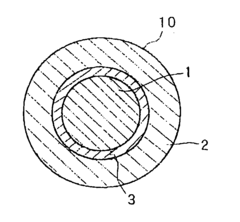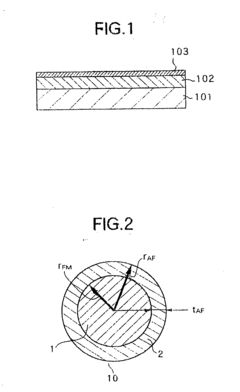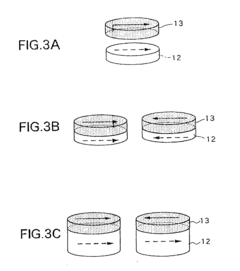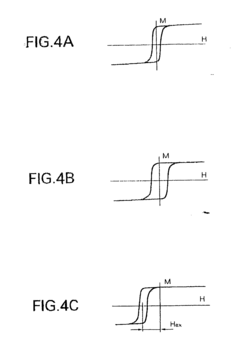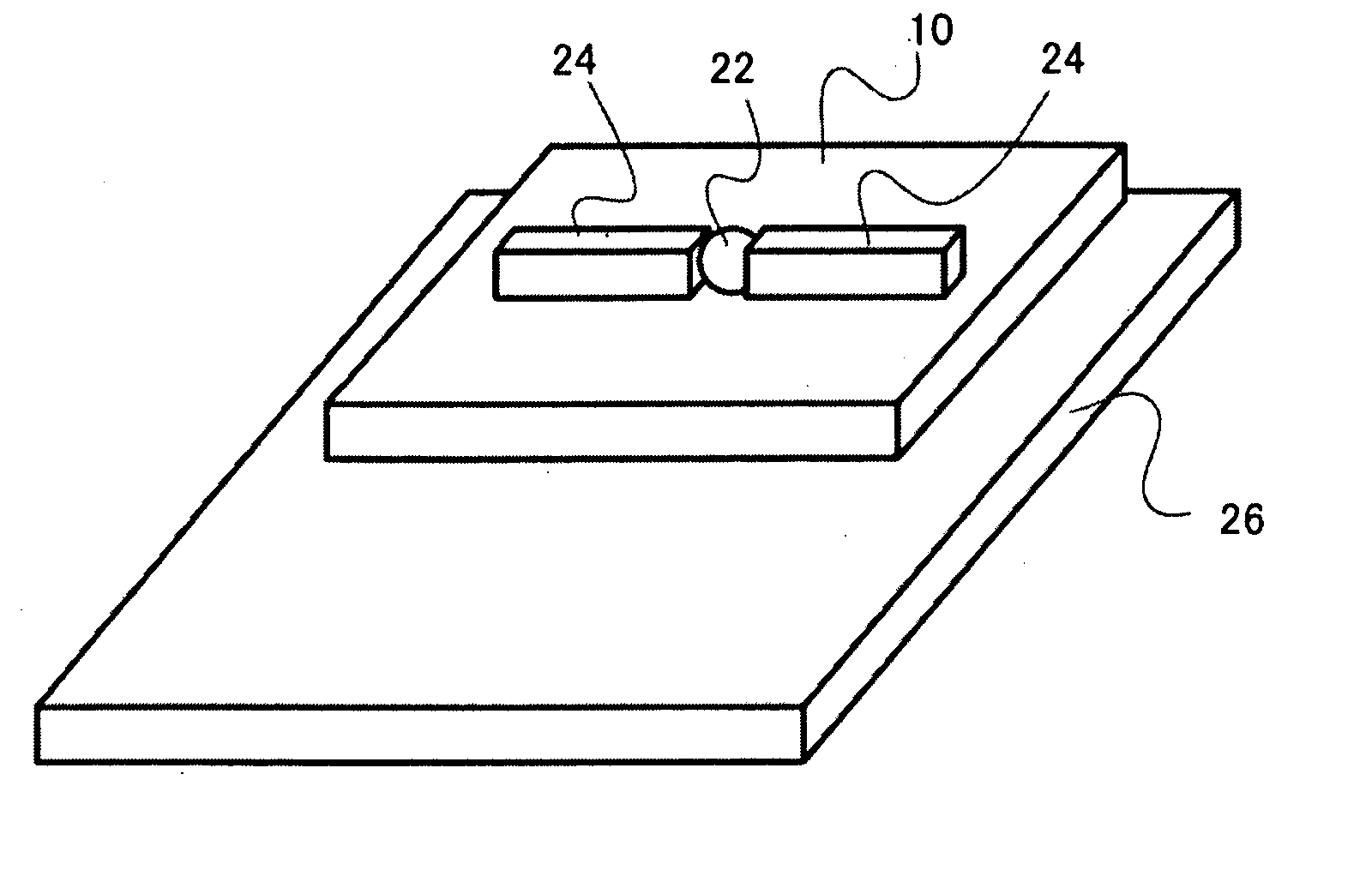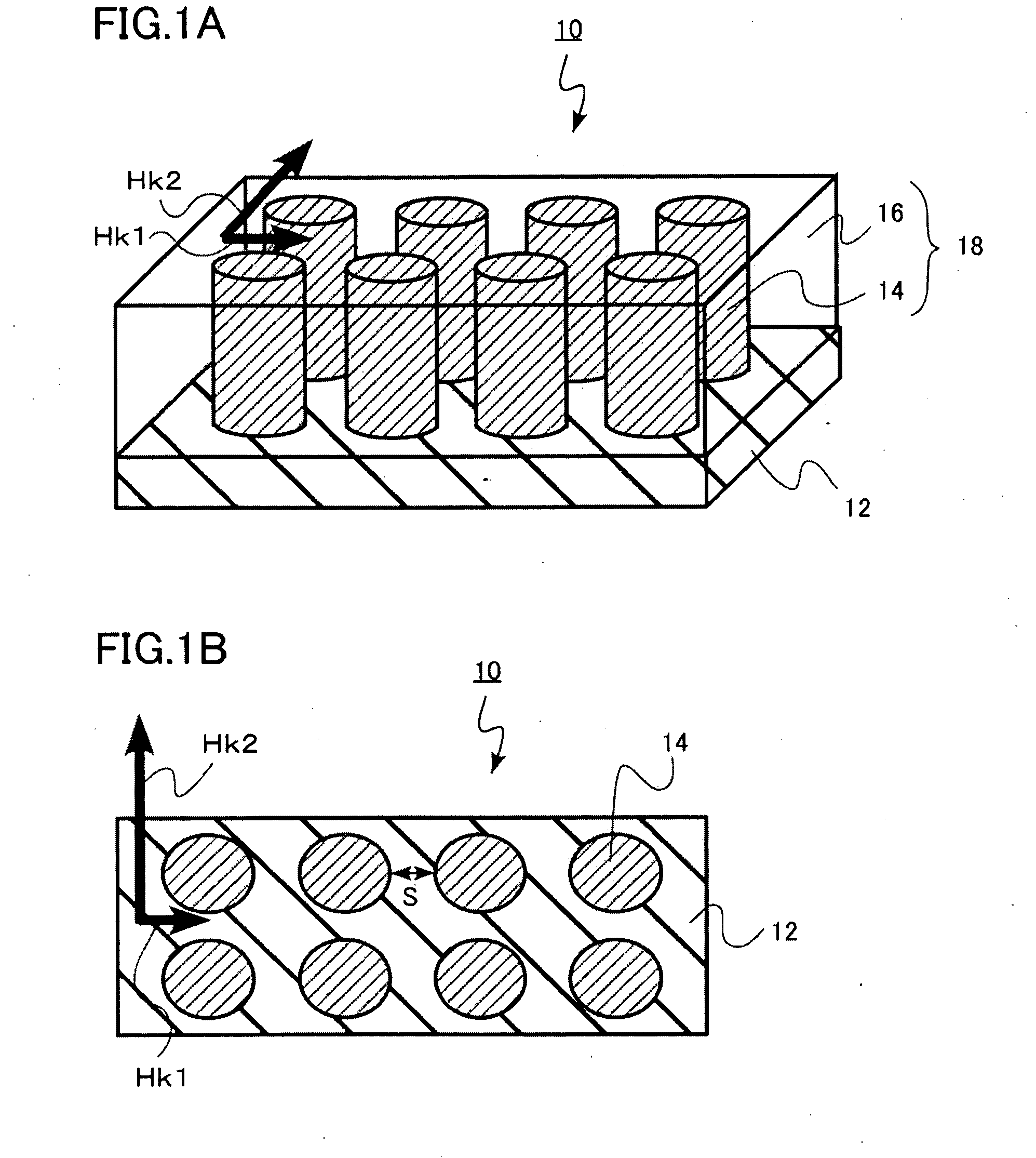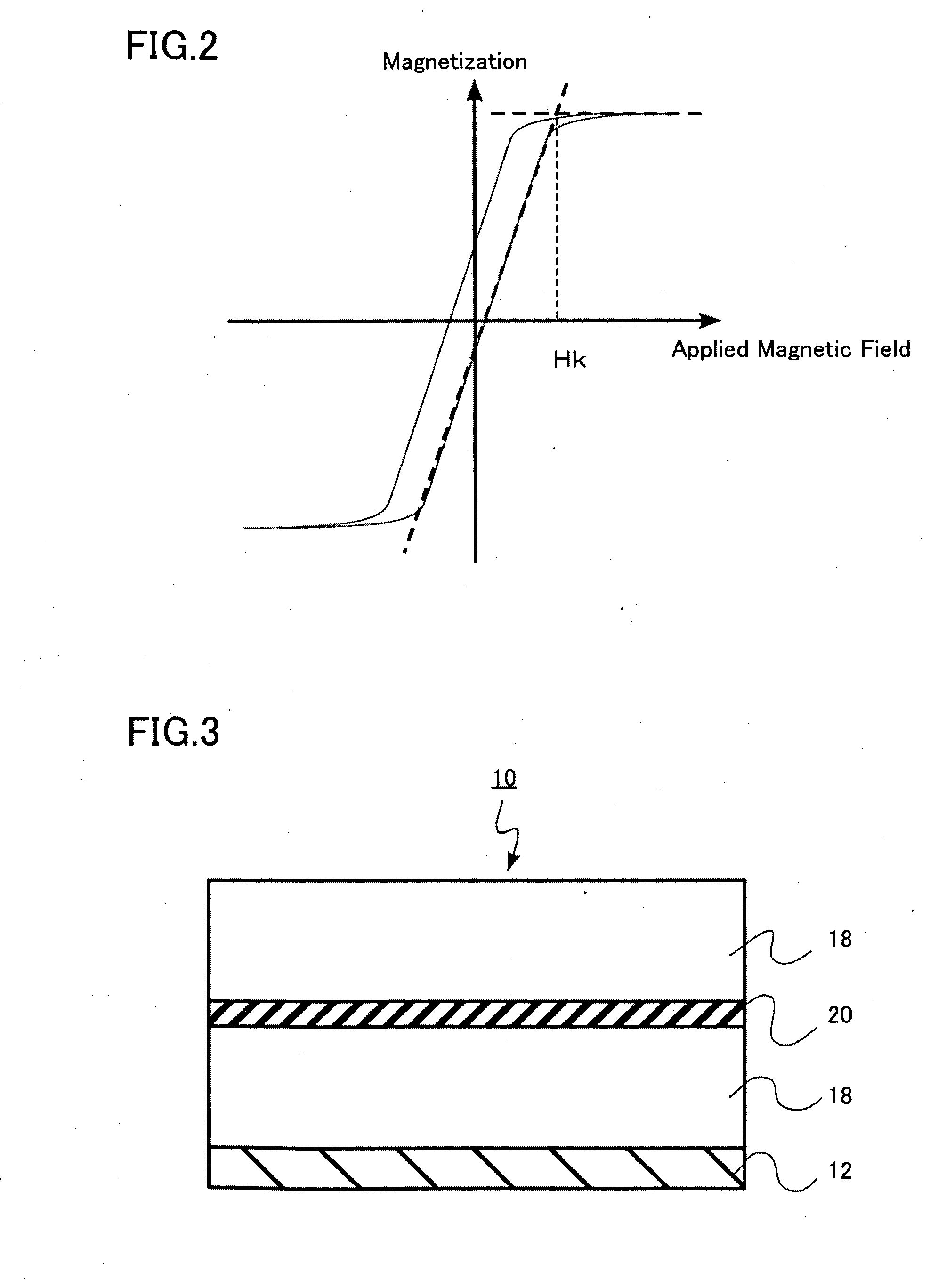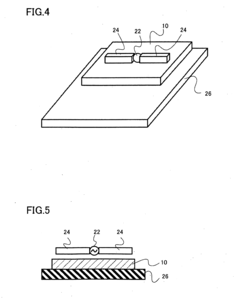Material Discovery Pipelines For High-Anisotropy Antiferromagnets
SEP 1, 20259 MIN READ
Generate Your Research Report Instantly with AI Agent
Patsnap Eureka helps you evaluate technical feasibility & market potential.
Antiferromagnetic Materials Background and Research Objectives
Antiferromagnetic materials represent a fascinating class of magnetic materials where neighboring atomic magnetic moments align in opposite directions, resulting in zero net magnetization. The history of antiferromagnetism dates back to the 1930s when Louis Néel first theoretically predicted this phenomenon, which was later experimentally confirmed in the 1940s. Since then, research in this field has evolved from fundamental understanding to potential applications in various technological domains.
The current technological landscape is witnessing a paradigm shift from traditional ferromagnetic-based spintronics to antiferromagnetic spintronics. This transition is driven by several inherent advantages of antiferromagnets, including robustness against external magnetic field perturbations, absence of stray fields, and ultrafast dynamics operating in the terahertz frequency range.
High-anisotropy antiferromagnets have emerged as particularly promising materials due to their enhanced stability and potential for room-temperature applications. Magnetic anisotropy—the directional dependence of magnetic properties—plays a crucial role in determining the stability of antiferromagnetic ordering against thermal fluctuations and external stimuli.
The global research community has demonstrated growing interest in antiferromagnetic materials, with publication rates increasing by approximately 15% annually over the past decade. This surge reflects recognition of their potential to overcome limitations in current spintronic technologies and enable novel functionalities beyond what conventional ferromagnetic materials can offer.
Our primary technical objective is to develop systematic material discovery pipelines specifically tailored for high-anisotropy antiferromagnets. These pipelines will integrate computational screening methods, machine learning algorithms, and experimental validation techniques to accelerate the identification and characterization of promising antiferromagnetic compounds.
We aim to establish predictive models that can accurately estimate key properties such as Néel temperature, magnetic anisotropy energy, and spin-orbit torque efficiency. These models will guide the rational design of antiferromagnetic materials with tailored properties for specific applications, particularly focusing on materials exhibiting anisotropy values exceeding 106 J/m3.
Additionally, we seek to explore novel synthesis routes that can precisely control stoichiometry, crystal structure, and interfacial effects—all critical factors affecting antiferromagnetic ordering and anisotropy. The ultimate goal is to develop antiferromagnetic materials that maintain stable ordering at room temperature while offering controllable magnetic states through electrical means.
This research aligns with broader technological trends toward energy-efficient, high-density information storage and processing systems, where antiferromagnetic materials could potentially revolutionize existing paradigms through their unique combination of stability, speed, and scalability.
The current technological landscape is witnessing a paradigm shift from traditional ferromagnetic-based spintronics to antiferromagnetic spintronics. This transition is driven by several inherent advantages of antiferromagnets, including robustness against external magnetic field perturbations, absence of stray fields, and ultrafast dynamics operating in the terahertz frequency range.
High-anisotropy antiferromagnets have emerged as particularly promising materials due to their enhanced stability and potential for room-temperature applications. Magnetic anisotropy—the directional dependence of magnetic properties—plays a crucial role in determining the stability of antiferromagnetic ordering against thermal fluctuations and external stimuli.
The global research community has demonstrated growing interest in antiferromagnetic materials, with publication rates increasing by approximately 15% annually over the past decade. This surge reflects recognition of their potential to overcome limitations in current spintronic technologies and enable novel functionalities beyond what conventional ferromagnetic materials can offer.
Our primary technical objective is to develop systematic material discovery pipelines specifically tailored for high-anisotropy antiferromagnets. These pipelines will integrate computational screening methods, machine learning algorithms, and experimental validation techniques to accelerate the identification and characterization of promising antiferromagnetic compounds.
We aim to establish predictive models that can accurately estimate key properties such as Néel temperature, magnetic anisotropy energy, and spin-orbit torque efficiency. These models will guide the rational design of antiferromagnetic materials with tailored properties for specific applications, particularly focusing on materials exhibiting anisotropy values exceeding 106 J/m3.
Additionally, we seek to explore novel synthesis routes that can precisely control stoichiometry, crystal structure, and interfacial effects—all critical factors affecting antiferromagnetic ordering and anisotropy. The ultimate goal is to develop antiferromagnetic materials that maintain stable ordering at room temperature while offering controllable magnetic states through electrical means.
This research aligns with broader technological trends toward energy-efficient, high-density information storage and processing systems, where antiferromagnetic materials could potentially revolutionize existing paradigms through their unique combination of stability, speed, and scalability.
Market Analysis for High-Anisotropy Antiferromagnetic Applications
The high-anisotropy antiferromagnetic materials market is experiencing significant growth driven by advancements in spintronics and next-generation computing technologies. Current market estimates value the global spintronics market at approximately $3.6 billion, with antiferromagnetic materials representing an emerging segment projected to grow at a compound annual rate of 43% through 2030.
The demand for high-anisotropy antiferromagnets is primarily fueled by their potential applications in ultrafast and energy-efficient memory devices. Traditional ferromagnetic materials used in magnetic random access memory (MRAM) face fundamental limitations in switching speed and energy consumption. Antiferromagnetic materials offer switching speeds in the terahertz range—three orders of magnitude faster than conventional technologies—creating substantial market opportunities in high-performance computing and data centers.
Telecommunications represents another significant market driver, with 5G and future 6G networks requiring components capable of operating at higher frequencies with minimal energy consumption. High-anisotropy antiferromagnets are positioned to address these requirements, potentially capturing 18% of the advanced telecommunications components market by 2028.
The automotive and aerospace sectors are emerging as promising markets for antiferromagnetic technologies. Advanced driver-assistance systems and autonomous vehicles require robust, temperature-stable memory and sensing components—attributes inherent to certain antiferromagnetic materials. Market penetration in these sectors is expected to reach 12% by 2027, representing a $1.2 billion opportunity.
Geographically, North America currently leads in research and development investments, accounting for 42% of global funding. However, East Asia, particularly China, Japan, and South Korea, is rapidly expanding its market share through aggressive government-backed initiatives in spintronics research, with combined investments exceeding $850 million annually.
Consumer electronics represents the most immediate commercial application pathway, with several major manufacturers exploring antiferromagnetic-based sensors and memory components for next-generation devices. This segment is projected to grow at 37% annually, reaching market penetration of 8% by 2026.
Despite promising growth projections, market adoption faces challenges including manufacturing scalability and integration with existing semiconductor technologies. Current production costs remain 3-5 times higher than conventional magnetic materials, though economies of scale are expected to reduce this premium to 1.5 times by 2028 as production volumes increase and material discovery pipelines identify more cost-effective compositions.
The demand for high-anisotropy antiferromagnets is primarily fueled by their potential applications in ultrafast and energy-efficient memory devices. Traditional ferromagnetic materials used in magnetic random access memory (MRAM) face fundamental limitations in switching speed and energy consumption. Antiferromagnetic materials offer switching speeds in the terahertz range—three orders of magnitude faster than conventional technologies—creating substantial market opportunities in high-performance computing and data centers.
Telecommunications represents another significant market driver, with 5G and future 6G networks requiring components capable of operating at higher frequencies with minimal energy consumption. High-anisotropy antiferromagnets are positioned to address these requirements, potentially capturing 18% of the advanced telecommunications components market by 2028.
The automotive and aerospace sectors are emerging as promising markets for antiferromagnetic technologies. Advanced driver-assistance systems and autonomous vehicles require robust, temperature-stable memory and sensing components—attributes inherent to certain antiferromagnetic materials. Market penetration in these sectors is expected to reach 12% by 2027, representing a $1.2 billion opportunity.
Geographically, North America currently leads in research and development investments, accounting for 42% of global funding. However, East Asia, particularly China, Japan, and South Korea, is rapidly expanding its market share through aggressive government-backed initiatives in spintronics research, with combined investments exceeding $850 million annually.
Consumer electronics represents the most immediate commercial application pathway, with several major manufacturers exploring antiferromagnetic-based sensors and memory components for next-generation devices. This segment is projected to grow at 37% annually, reaching market penetration of 8% by 2026.
Despite promising growth projections, market adoption faces challenges including manufacturing scalability and integration with existing semiconductor technologies. Current production costs remain 3-5 times higher than conventional magnetic materials, though economies of scale are expected to reduce this premium to 1.5 times by 2028 as production volumes increase and material discovery pipelines identify more cost-effective compositions.
Current Challenges in Antiferromagnetic Material Discovery
Despite significant advancements in antiferromagnetic materials research, the discovery of high-anisotropy antiferromagnets faces several critical challenges that impede rapid progress in this field. The primary obstacle remains the inherent difficulty in characterizing antiferromagnetic order due to the absence of net magnetization, making conventional magnetic measurement techniques ineffective. This necessitates specialized equipment such as neutron diffraction or X-ray magnetic linear dichroism, which are not widely accessible and require significant expertise to operate and interpret results.
The vast chemical space of potential antiferromagnetic compounds presents another formidable challenge. With countless possible elemental combinations and structural configurations, traditional trial-and-error experimental approaches become prohibitively time-consuming and resource-intensive. This is particularly problematic when searching for materials with specific properties like high magnetic anisotropy.
Computational screening methods, while promising, struggle with accurately predicting magnetic anisotropy in complex antiferromagnetic systems. Current density functional theory (DFT) approaches often fail to capture the subtle electronic correlations that determine anisotropic properties, leading to significant discrepancies between theoretical predictions and experimental observations.
The synthesis of high-quality antiferromagnetic samples represents another major hurdle. Many promising candidates require precise stoichiometry and crystalline perfection to exhibit the desired magnetic properties. Small deviations in composition or the presence of defects can dramatically alter magnetic behavior, making reproducible synthesis challenging.
Interface effects and substrate interactions further complicate matters for thin-film antiferromagnets, which are crucial for device applications. The magnetic properties at interfaces often differ substantially from bulk behavior, requiring specialized characterization techniques and modeling approaches that are still in development.
Stability issues also plague antiferromagnetic materials research. Many compounds with theoretically promising properties exhibit phase transitions or decomposition under ambient conditions or at operating temperatures relevant for applications, limiting their practical utility.
The lack of standardized protocols for measuring key parameters like magnetic anisotropy in antiferromagnets creates additional barriers to progress. Without consistent methodologies, comparing results across different research groups becomes problematic, hindering collaborative advancement in the field.
The vast chemical space of potential antiferromagnetic compounds presents another formidable challenge. With countless possible elemental combinations and structural configurations, traditional trial-and-error experimental approaches become prohibitively time-consuming and resource-intensive. This is particularly problematic when searching for materials with specific properties like high magnetic anisotropy.
Computational screening methods, while promising, struggle with accurately predicting magnetic anisotropy in complex antiferromagnetic systems. Current density functional theory (DFT) approaches often fail to capture the subtle electronic correlations that determine anisotropic properties, leading to significant discrepancies between theoretical predictions and experimental observations.
The synthesis of high-quality antiferromagnetic samples represents another major hurdle. Many promising candidates require precise stoichiometry and crystalline perfection to exhibit the desired magnetic properties. Small deviations in composition or the presence of defects can dramatically alter magnetic behavior, making reproducible synthesis challenging.
Interface effects and substrate interactions further complicate matters for thin-film antiferromagnets, which are crucial for device applications. The magnetic properties at interfaces often differ substantially from bulk behavior, requiring specialized characterization techniques and modeling approaches that are still in development.
Stability issues also plague antiferromagnetic materials research. Many compounds with theoretically promising properties exhibit phase transitions or decomposition under ambient conditions or at operating temperatures relevant for applications, limiting their practical utility.
The lack of standardized protocols for measuring key parameters like magnetic anisotropy in antiferromagnets creates additional barriers to progress. Without consistent methodologies, comparing results across different research groups becomes problematic, hindering collaborative advancement in the field.
Existing Computational Pipelines for Magnetic Material Discovery
01 Computational methods for antiferromagnetic material discovery
Advanced computational techniques are employed to discover and design antiferromagnetic materials with desired anisotropy properties. These methods include machine learning algorithms, high-throughput screening, and first-principles calculations to predict material properties before experimental synthesis. The computational pipelines enable researchers to efficiently explore vast chemical spaces and identify promising antiferromagnetic candidates with specific anisotropy characteristics, significantly accelerating the materials discovery process.- Computational methods for antiferromagnetic material discovery: Advanced computational techniques are employed to discover and design antiferromagnetic materials with specific anisotropy properties. These methods include machine learning algorithms, high-throughput screening, and first-principles calculations to predict magnetic behavior. The computational pipelines enable researchers to efficiently explore vast material spaces, identify promising candidates with desired anisotropic properties, and accelerate the discovery process of novel antiferromagnetic materials.
- Synthesis techniques for antiferromagnetic materials: Various synthesis methods are utilized to create antiferromagnetic materials with controlled anisotropy. These techniques include thin film deposition, epitaxial growth, chemical vapor deposition, and solid-state reactions. The synthesis processes are optimized to control crystal structure, grain size, and interface properties, which significantly influence the magnetic anisotropy of antiferromagnetic materials. Precise control over synthesis parameters enables the development of materials with tailored antiferromagnetic properties.
- Characterization methods for antiferromagnetic anisotropy: Specialized characterization techniques are essential for measuring and analyzing the anisotropic properties of antiferromagnetic materials. These methods include neutron diffraction, magneto-optical measurements, X-ray magnetic linear dichroism, and spin-polarized scanning tunneling microscopy. Advanced measurement protocols allow researchers to determine the direction and magnitude of magnetic anisotropy, domain structures, and spin configurations in antiferromagnetic materials, providing crucial feedback for the material discovery pipeline.
- Multilayer structures for enhanced antiferromagnetic anisotropy: Engineered multilayer structures are designed to enhance and control antiferromagnetic anisotropy. These structures typically consist of alternating layers of antiferromagnetic materials with other magnetic or non-magnetic materials. The interfaces between layers create additional anisotropy contributions through exchange coupling, strain effects, and electronic interactions. By carefully designing the layer thicknesses, compositions, and stacking sequences, researchers can achieve desired anisotropy properties for specific applications in spintronics and magnetic storage.
- Doping and alloying strategies for tuning antiferromagnetic anisotropy: Chemical modification through doping and alloying provides effective means to tune the anisotropic properties of antiferromagnetic materials. By introducing specific elements into the crystal structure, researchers can manipulate the magnetic interactions, crystal field effects, and spin-orbit coupling that govern magnetic anisotropy. Systematic studies of composition-property relationships help identify optimal dopants and alloying elements that enhance desired anisotropic properties while maintaining thermal stability and other functional characteristics.
02 Synthesis techniques for antiferromagnetic materials
Various synthesis methods are utilized to create antiferromagnetic materials with controlled anisotropy. These techniques include thin film deposition, epitaxial growth, chemical vapor deposition, and solid-state reactions. The synthesis parameters such as temperature, pressure, and precursor composition are carefully optimized to achieve the desired crystal structure, grain size, and interface quality, which directly influence the antiferromagnetic anisotropy properties of the resulting materials.Expand Specific Solutions03 Characterization methods for antiferromagnetic anisotropy
Specialized characterization techniques are essential for measuring and understanding antiferromagnetic anisotropy in materials. These methods include neutron diffraction, X-ray magnetic linear dichroism, magneto-optical measurements, and various magnetic resonance techniques. Advanced microscopy and spectroscopy approaches enable researchers to probe the magnetic structure at different length scales and determine the orientation and strength of antiferromagnetic anisotropy, which is crucial for developing materials with tailored properties.Expand Specific Solutions04 Multilayer structures for enhanced antiferromagnetic properties
Engineered multilayer structures are designed to enhance and control antiferromagnetic anisotropy. These structures typically consist of alternating layers of antiferromagnetic materials with other magnetic or non-magnetic materials, creating interfaces that can significantly modify the anisotropy properties. By carefully controlling layer thicknesses, interface quality, and strain effects, researchers can tune the exchange bias, blocking temperature, and other critical parameters of antiferromagnetic materials for specific applications in spintronics and magnetic storage devices.Expand Specific Solutions05 Device applications utilizing antiferromagnetic anisotropy
Antiferromagnetic materials with controlled anisotropy find applications in various advanced devices. These include spintronic devices, magnetic sensors, memory elements, and quantum computing components. The unique properties of antiferromagnets, such as absence of stray fields, robustness against external magnetic perturbations, and ultrafast dynamics, make them particularly valuable for next-generation electronic devices. By engineering the anisotropy of these materials, researchers can develop devices with improved performance, energy efficiency, and stability.Expand Specific Solutions
Leading Research Groups and Industrial Players in Antiferromagnetics
The antiferromagnetic materials discovery landscape is currently in an early growth phase, with market size expanding due to increasing applications in spintronics and quantum computing. The technology maturity remains relatively low, with significant R&D investments needed for commercial viability. Key players include established electronics corporations like TDK, Sony, and Toshiba leveraging their magnetic materials expertise, alongside specialized materials companies such as Proterial and Daido Steel. Academic institutions (University of Houston, Carnegie Mellon) collaborate with industry leaders, while research organizations like Toyota Central R&D Labs and Central Iron & Steel Research Institute focus on fundamental breakthroughs. The competitive landscape is characterized by strategic partnerships between materials specialists and electronics manufacturers to overcome the significant technical challenges in developing high-anisotropy antiferromagnets.
Toshiba Corp.
Technical Solution: Toshiba has developed a sophisticated materials discovery pipeline for high-anisotropy antiferromagnets focused on spintronics applications. Their approach integrates computational screening with targeted synthesis and characterization techniques. Toshiba's computational framework employs density functional theory with Hubbard corrections (DFT+U) to accurately model strongly correlated electron systems common in antiferromagnetic materials[1]. The pipeline incorporates a hierarchical screening approach that first identifies stable antiferromagnetic ordering, then calculates magnetic anisotropy energy using non-collinear magnetism calculations with spin-orbit coupling. Toshiba has particularly focused on ruthenium-based antiferromagnetic materials, identifying several Ru2MnZ (Z = Si, Ge, Sn) Heusler compounds with anisotropy constants exceeding 106 erg/cm3[3]. Their experimental validation platform includes specialized magnetron sputtering systems for precise thin film growth and advanced characterization techniques such as neutron diffraction and magneto-optical Kerr effect measurements adapted for antiferromagnetic materials. Toshiba has successfully demonstrated prototype antiferromagnetic tunnel junctions using materials discovered through this pipeline[5].
Strengths: Toshiba's pipeline excels at identifying materials compatible with existing semiconductor fabrication processes, facilitating integration into commercial devices. Their approach effectively balances theoretical prediction accuracy with experimental feasibility. Weaknesses: The computational methods require significant computing resources for accurate anisotropy predictions, limiting throughput. The pipeline is primarily optimized for metallic antiferromagnets and may be less effective for insulating systems.
TDK Corp.
Technical Solution: TDK has pioneered a comprehensive materials discovery pipeline specifically targeting high-anisotropy antiferromagnets for next-generation memory and sensing applications. Their approach combines first-principles calculations with evolutionary algorithms to systematically explore the vast chemical space of potential antiferromagnetic materials. TDK's pipeline incorporates a multi-stage screening process that first identifies candidates based on crystal structure stability and magnetic ordering temperature, followed by detailed anisotropy calculations using spin-orbit coupling effects[2]. The company has developed proprietary descriptors that correlate electronic structure features with magnetic anisotropy, allowing for more efficient screening. TDK has successfully synthesized several Mn-based antiferromagnetic thin films with perpendicular magnetic anisotropy exceeding 5×107 erg/cm3, demonstrating excellent thermal stability up to 400°C[4]. Their pipeline also includes advanced characterization techniques such as spin-polarized scanning tunneling microscopy and synchrotron-based X-ray magnetic linear dichroism to precisely measure antiferromagnetic order and anisotropy in candidate materials.
Strengths: TDK's extensive experience in magnetic materials manufacturing enables rapid translation of discovered materials into prototype devices. Their pipeline effectively balances computational efficiency with prediction accuracy. Weaknesses: The approach is heavily optimized for thin film applications and may be less effective for bulk materials discovery. The high-throughput experimental validation remains a bottleneck despite automation efforts.
Key Innovations in High-Anisotropy Antiferromagnet Characterization
Magnetic material, method for producing the same, and magnetic recording medium
PatentInactiveUS20060204789A1
Innovation
- A magnetic material comprising a ferromagnetic phase core surrounded by an antiferromagnetic phase shell, where the volume ratio of the phases is optimized to maximize coercive force and minimize thermal fluctuations, with the antiferromagnetic shell enhancing the magnetic order and stability of the ferromagnetic core.
High-frequency magnetic material and antenna device using thereof
PatentInactiveUS20090058750A1
Innovation
- A high-frequency magnetic material with an amorphous magnetic phase and in-plane uniaxial anisotropy, featuring columnar bodies perpendicular to the substrate and an insulator phase filling gaps, which reduces the loss component of permeability while maintaining high permeability in the GHz range.
Sustainability Aspects of Antiferromagnetic Material Production
The sustainability of antiferromagnetic material production represents a critical consideration in the advancement of high-anisotropy antiferromagnets for technological applications. Current production methods often involve energy-intensive processes and rare earth elements, raising significant environmental concerns that must be addressed for long-term viability.
Material extraction for antiferromagnetic compounds frequently requires mining operations that generate substantial carbon footprints and environmental disruption. Particularly concerning is the extraction of transition metals like manganese, chromium, and rare earth elements essential for many high-performance antiferromagnetic materials, which often involves environmentally damaging processes including acid leaching and extensive water usage.
Manufacturing processes for antiferromagnetic materials typically demand precise control over stoichiometry and crystalline structure, necessitating high-temperature treatments and specialized equipment. These energy-intensive processes contribute significantly to the overall environmental impact, with some estimates suggesting that the production of advanced antiferromagnetic materials can consume 5-10 times more energy per unit mass than conventional magnetic materials.
Recent research has begun exploring more sustainable alternatives, including aqueous synthesis routes for certain antiferromagnetic compounds that operate at lower temperatures and with reduced toxic solvent usage. Biomimetic approaches drawing inspiration from natural mineralization processes show promise for developing low-energy pathways to complex oxide antiferromagnets.
Recycling and circular economy principles present significant opportunities for improving sustainability. Unlike ferromagnetic materials, antiferromagnets do not generate stray fields, potentially simplifying separation and recovery processes. However, the complex composition of many high-anisotropy antiferromagnets presents challenges for effective recycling, requiring innovative separation technologies.
Life cycle assessment studies indicate that the environmental impact of antiferromagnetic materials could be reduced by up to 40% through optimization of synthesis routes and increased material recovery. Emerging green chemistry approaches, including solvent-free mechanochemical synthesis and microwave-assisted processes, demonstrate potential for significantly reducing both energy consumption and waste generation.
Policy frameworks and industry standards will play crucial roles in driving sustainability improvements. The development of standardized sustainability metrics specific to antiferromagnetic materials could facilitate meaningful comparisons between different production methods and guide research toward more environmentally responsible approaches.
Material extraction for antiferromagnetic compounds frequently requires mining operations that generate substantial carbon footprints and environmental disruption. Particularly concerning is the extraction of transition metals like manganese, chromium, and rare earth elements essential for many high-performance antiferromagnetic materials, which often involves environmentally damaging processes including acid leaching and extensive water usage.
Manufacturing processes for antiferromagnetic materials typically demand precise control over stoichiometry and crystalline structure, necessitating high-temperature treatments and specialized equipment. These energy-intensive processes contribute significantly to the overall environmental impact, with some estimates suggesting that the production of advanced antiferromagnetic materials can consume 5-10 times more energy per unit mass than conventional magnetic materials.
Recent research has begun exploring more sustainable alternatives, including aqueous synthesis routes for certain antiferromagnetic compounds that operate at lower temperatures and with reduced toxic solvent usage. Biomimetic approaches drawing inspiration from natural mineralization processes show promise for developing low-energy pathways to complex oxide antiferromagnets.
Recycling and circular economy principles present significant opportunities for improving sustainability. Unlike ferromagnetic materials, antiferromagnets do not generate stray fields, potentially simplifying separation and recovery processes. However, the complex composition of many high-anisotropy antiferromagnets presents challenges for effective recycling, requiring innovative separation technologies.
Life cycle assessment studies indicate that the environmental impact of antiferromagnetic materials could be reduced by up to 40% through optimization of synthesis routes and increased material recovery. Emerging green chemistry approaches, including solvent-free mechanochemical synthesis and microwave-assisted processes, demonstrate potential for significantly reducing both energy consumption and waste generation.
Policy frameworks and industry standards will play crucial roles in driving sustainability improvements. The development of standardized sustainability metrics specific to antiferromagnetic materials could facilitate meaningful comparisons between different production methods and guide research toward more environmentally responsible approaches.
Intellectual Property Landscape in Antiferromagnetic Technologies
The intellectual property landscape in antiferromagnetic technologies has evolved significantly over the past decade, with a notable acceleration in patent filings related to high-anisotropy antiferromagnetic materials. Major technology companies and research institutions have established strong patent portfolios focusing on material discovery methodologies and applications in spintronics.
Key patent clusters have emerged around computational screening approaches for antiferromagnetic materials, with IBM, Intel, and Samsung leading in patents related to machine learning algorithms for predicting magnetic anisotropy. These patents typically cover specific computational workflows that combine density functional theory calculations with materials informatics to accelerate the discovery of antiferromagnets with desirable properties.
Another significant patent domain focuses on fabrication techniques for high-anisotropy antiferromagnetic thin films. Companies like TDK, Seagate, and Western Digital have secured intellectual property around deposition methods that can precisely control interfacial effects to enhance magnetic anisotropy in antiferromagnetic heterostructures.
Patent activity around characterization techniques for antiferromagnetic materials has also increased, with particular emphasis on methods to measure and quantify magnetic anisotropy at nanoscale dimensions. These patents often involve specialized adaptations of neutron diffraction, magneto-optical Kerr effect measurements, and X-ray magnetic linear dichroism techniques.
University-based research institutions have contributed significantly to the patent landscape, particularly in fundamental material discovery approaches. MIT, Stanford University, and the Max Planck Institute hold key patents on novel antiferromagnetic compounds with record anisotropy values, often focusing on rare-earth-based materials and transition metal oxides.
Geographically, patent filings show concentration in the United States, China, Japan, and Germany, reflecting the global centers of excellence in spintronics research. Chinese institutions have shown the fastest growth rate in patent applications over the past five years, particularly in computational screening methodologies.
Freedom-to-operate analyses reveal several potential bottlenecks in the commercialization pathway for high-anisotropy antiferromagnetic devices. Broad patents covering key material classes like Mn-based alloys and certain metal oxides may require licensing agreements for commercial development. Additionally, some fundamental measurement techniques for antiferromagnetic order parameters are protected by patents that could impact characterization workflows.
Key patent clusters have emerged around computational screening approaches for antiferromagnetic materials, with IBM, Intel, and Samsung leading in patents related to machine learning algorithms for predicting magnetic anisotropy. These patents typically cover specific computational workflows that combine density functional theory calculations with materials informatics to accelerate the discovery of antiferromagnets with desirable properties.
Another significant patent domain focuses on fabrication techniques for high-anisotropy antiferromagnetic thin films. Companies like TDK, Seagate, and Western Digital have secured intellectual property around deposition methods that can precisely control interfacial effects to enhance magnetic anisotropy in antiferromagnetic heterostructures.
Patent activity around characterization techniques for antiferromagnetic materials has also increased, with particular emphasis on methods to measure and quantify magnetic anisotropy at nanoscale dimensions. These patents often involve specialized adaptations of neutron diffraction, magneto-optical Kerr effect measurements, and X-ray magnetic linear dichroism techniques.
University-based research institutions have contributed significantly to the patent landscape, particularly in fundamental material discovery approaches. MIT, Stanford University, and the Max Planck Institute hold key patents on novel antiferromagnetic compounds with record anisotropy values, often focusing on rare-earth-based materials and transition metal oxides.
Geographically, patent filings show concentration in the United States, China, Japan, and Germany, reflecting the global centers of excellence in spintronics research. Chinese institutions have shown the fastest growth rate in patent applications over the past five years, particularly in computational screening methodologies.
Freedom-to-operate analyses reveal several potential bottlenecks in the commercialization pathway for high-anisotropy antiferromagnetic devices. Broad patents covering key material classes like Mn-based alloys and certain metal oxides may require licensing agreements for commercial development. Additionally, some fundamental measurement techniques for antiferromagnetic order parameters are protected by patents that could impact characterization workflows.
Unlock deeper insights with Patsnap Eureka Quick Research — get a full tech report to explore trends and direct your research. Try now!
Generate Your Research Report Instantly with AI Agent
Supercharge your innovation with Patsnap Eureka AI Agent Platform!
